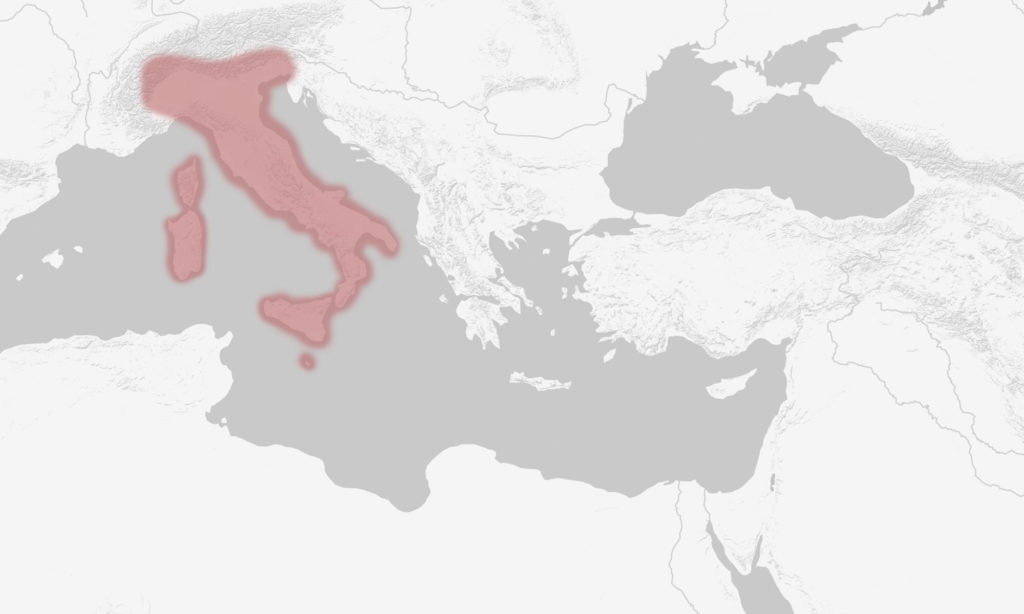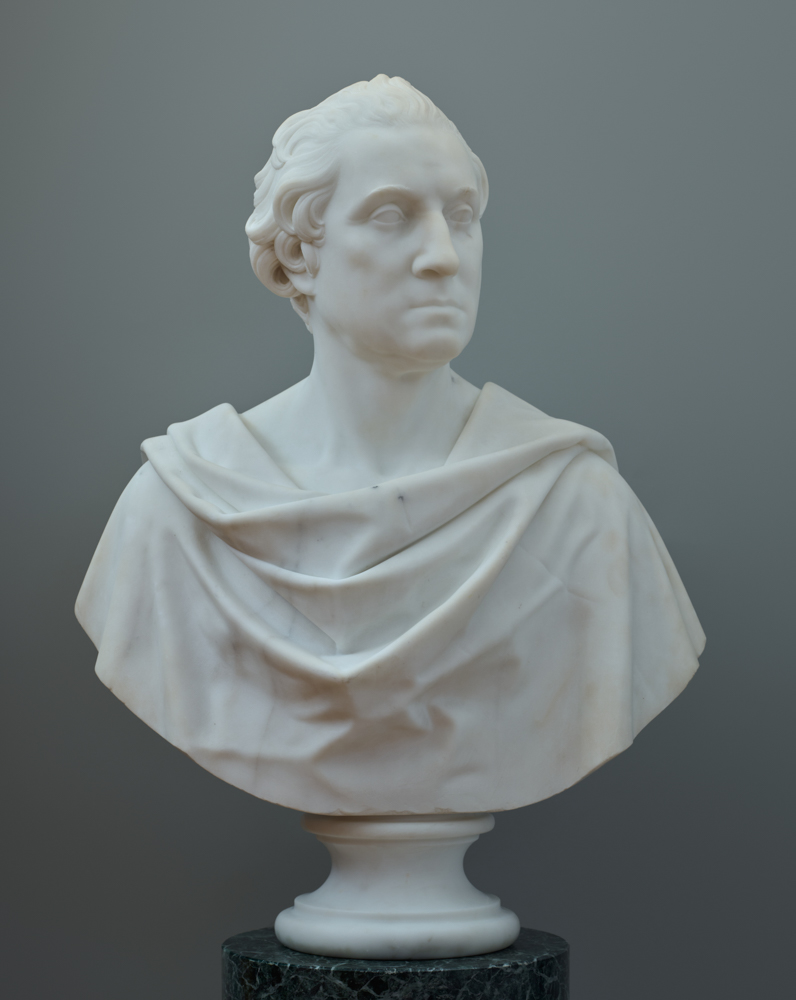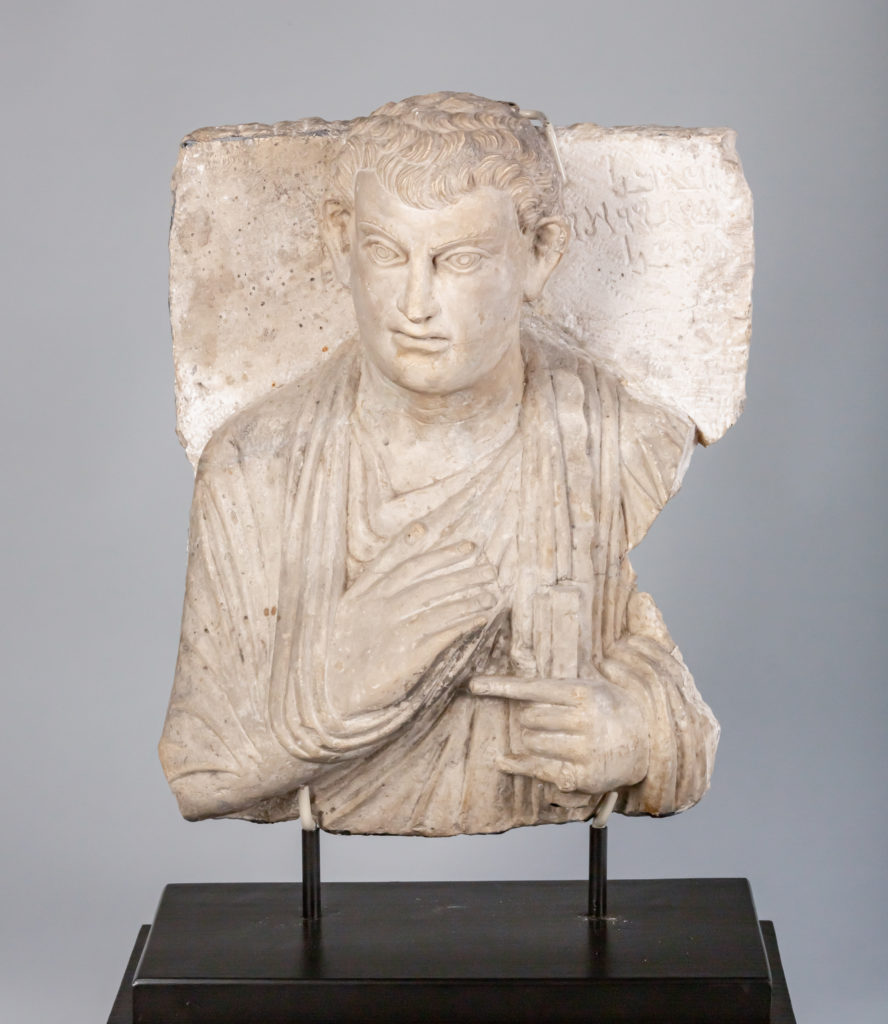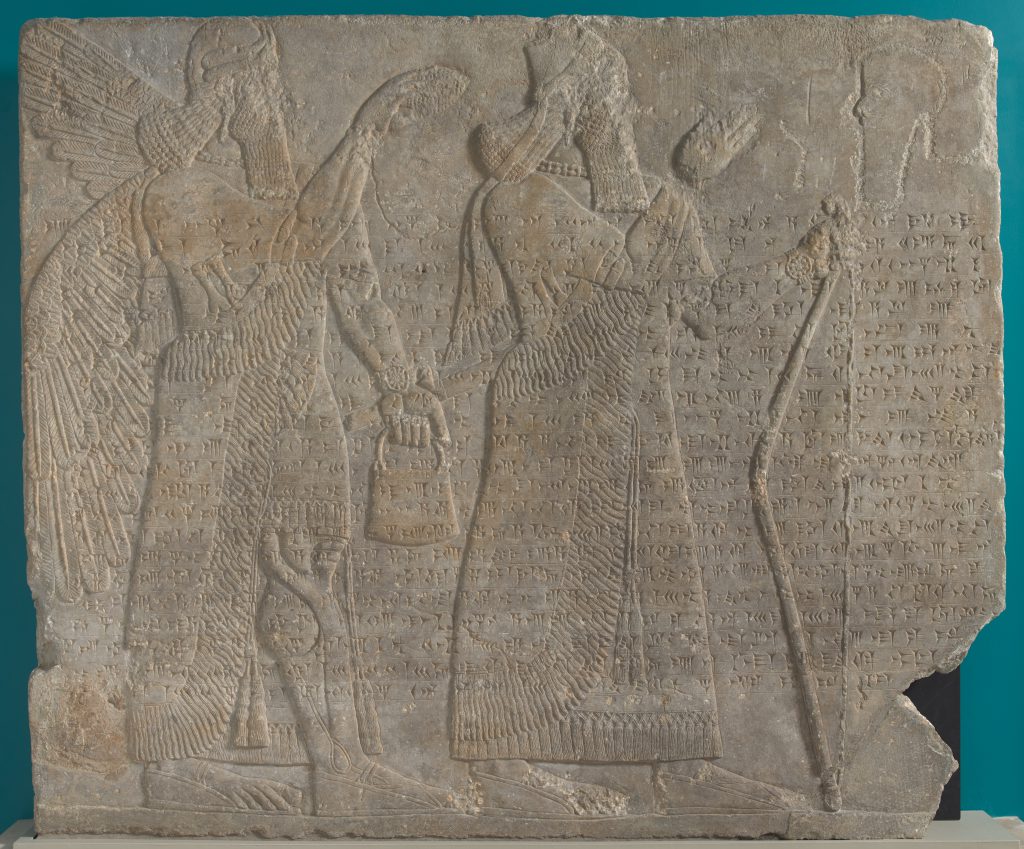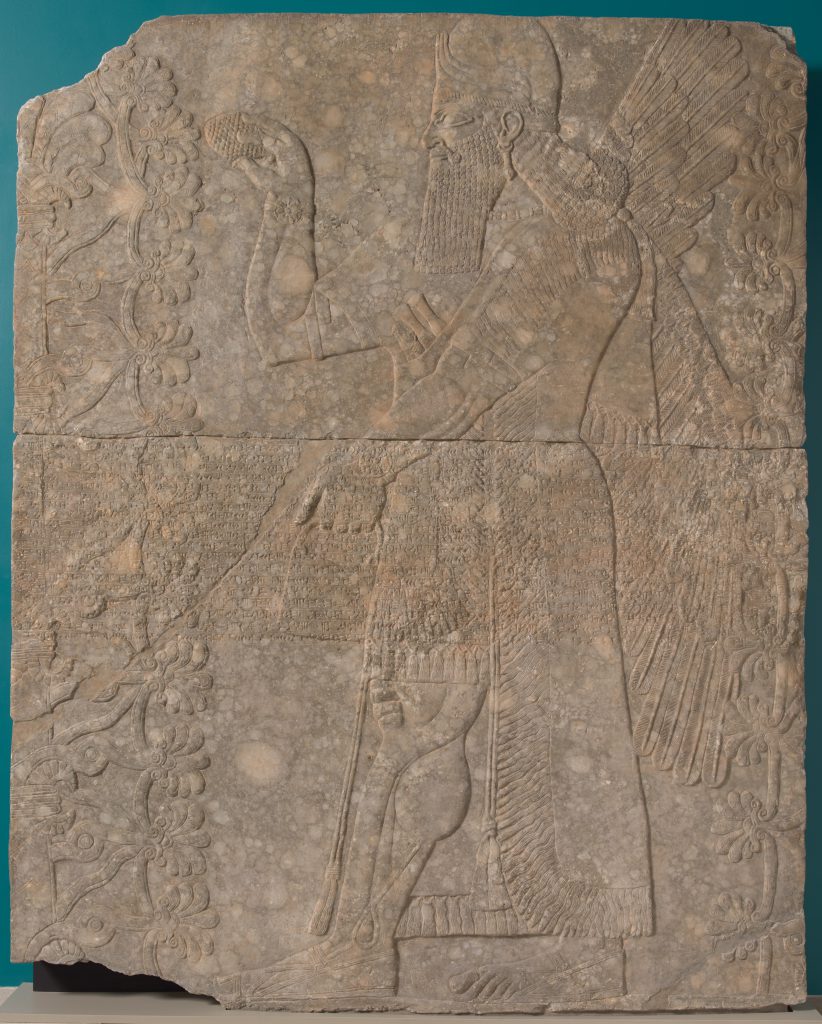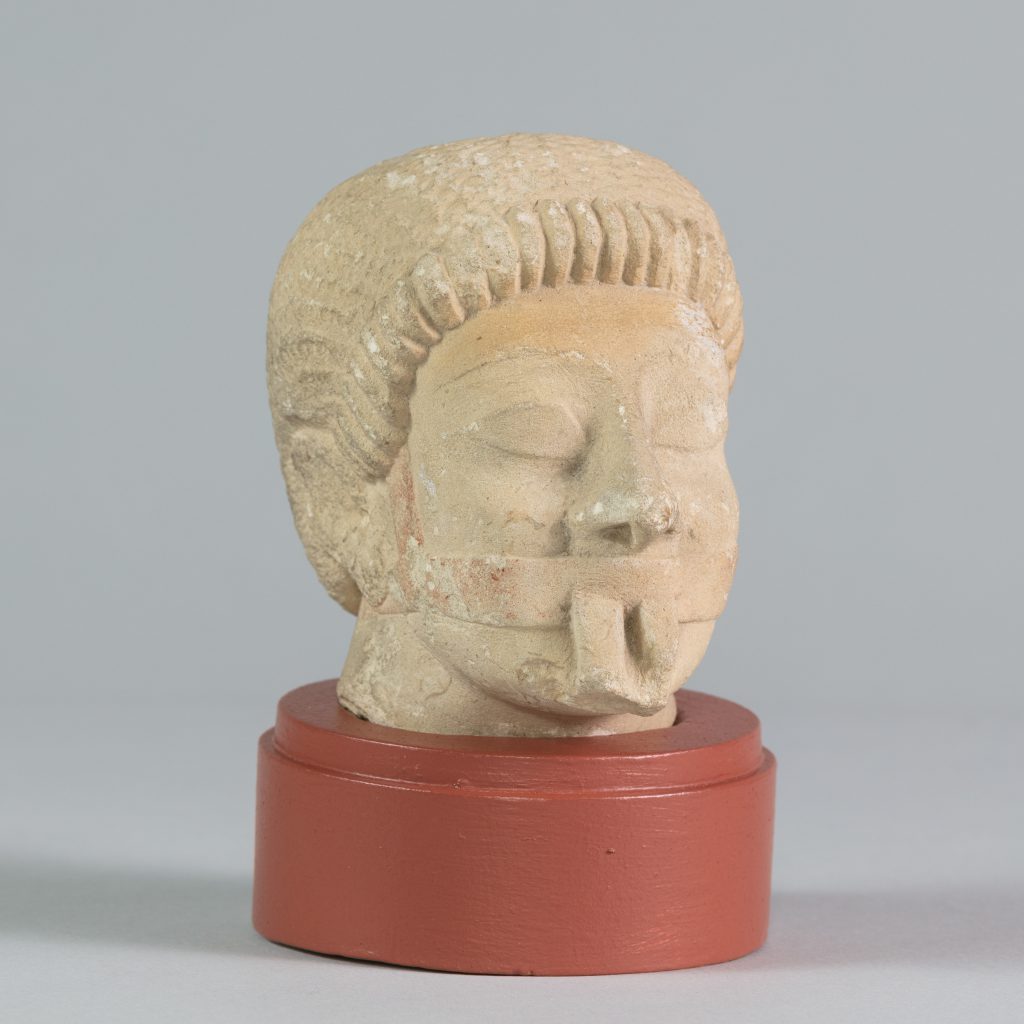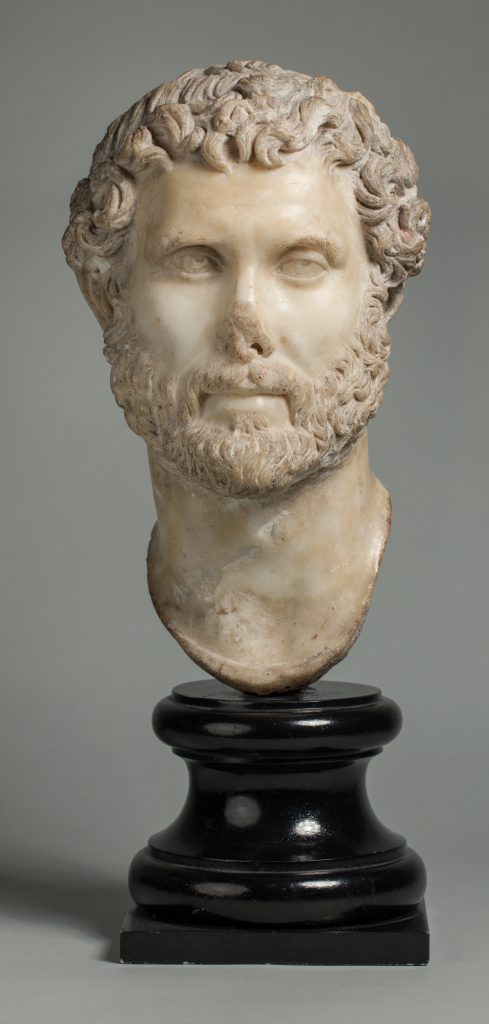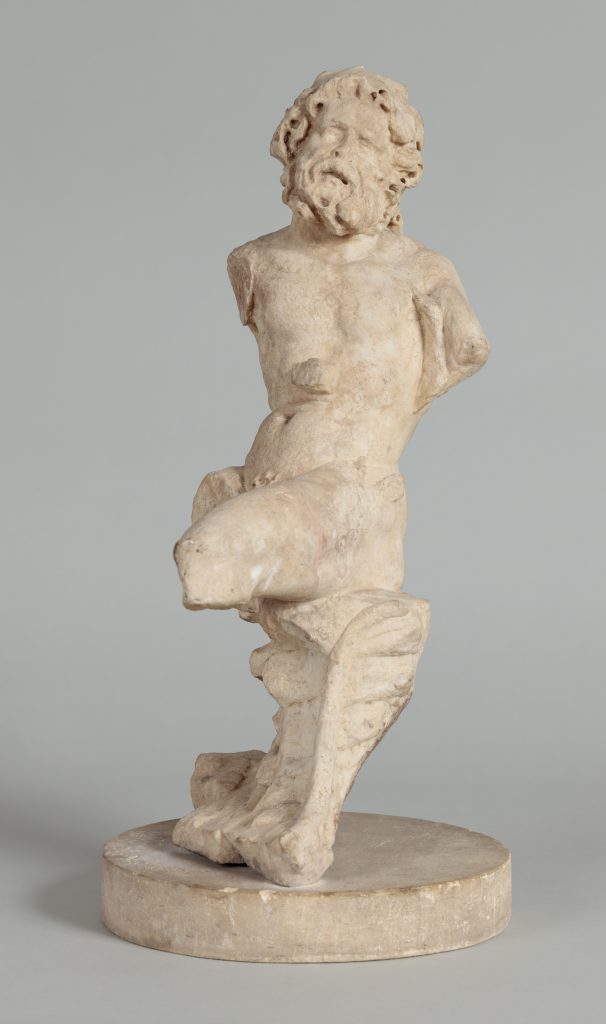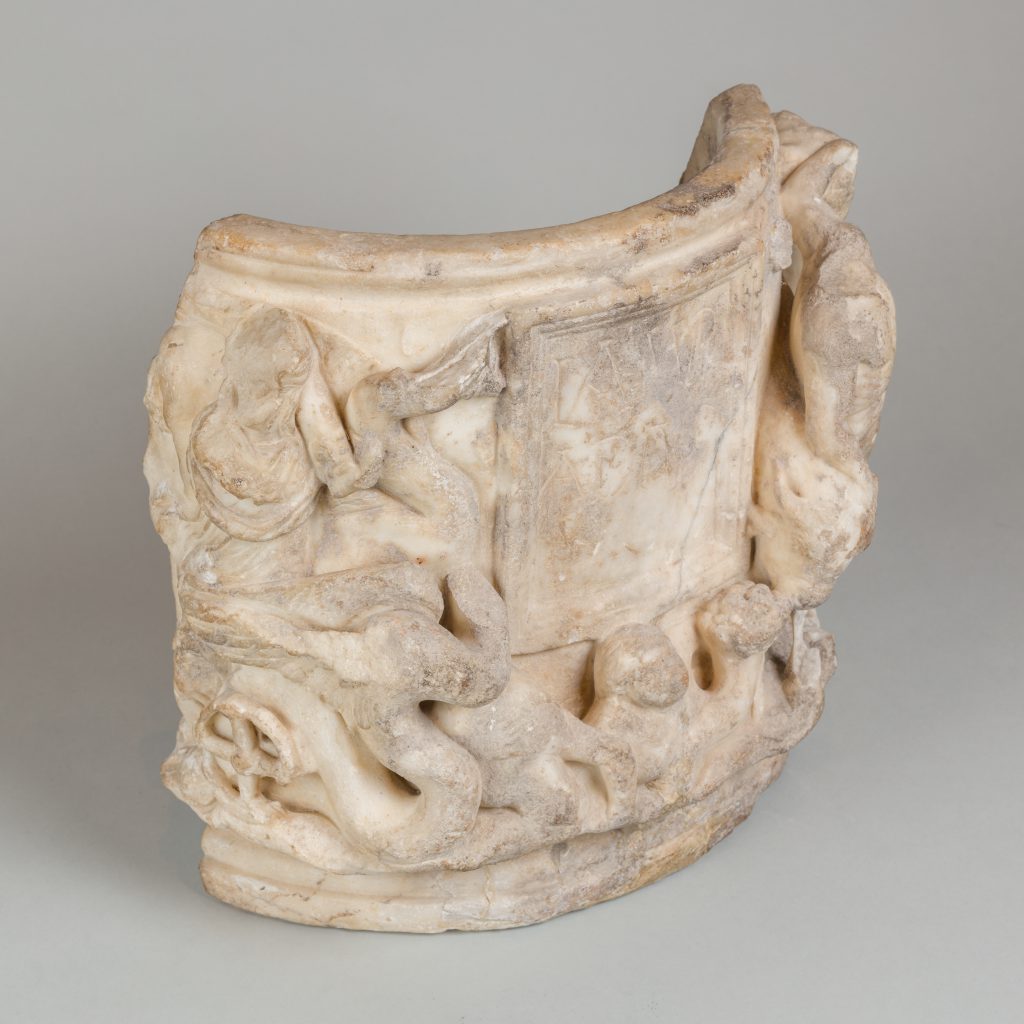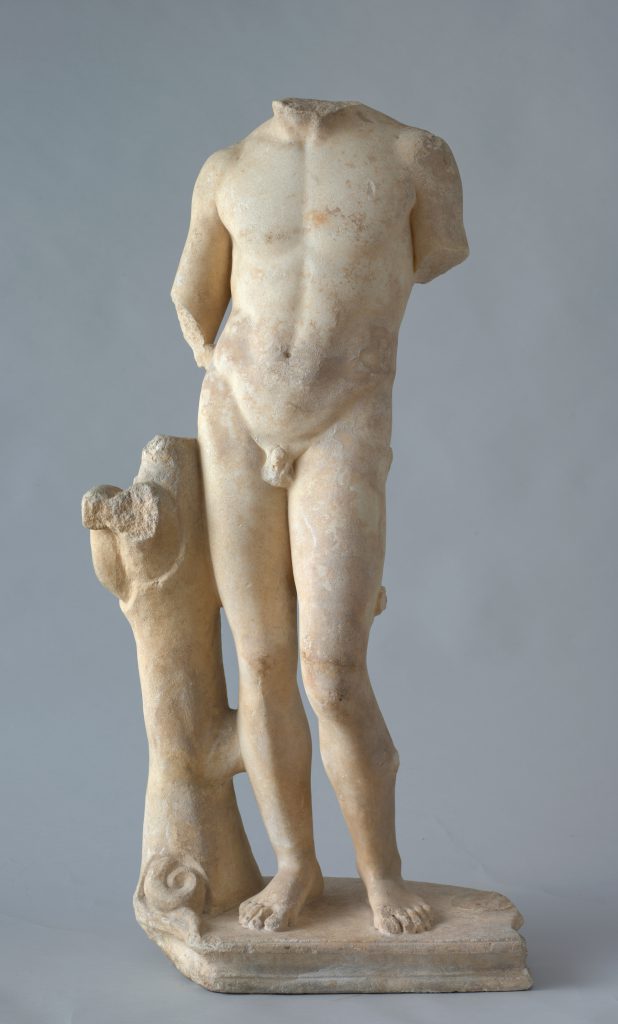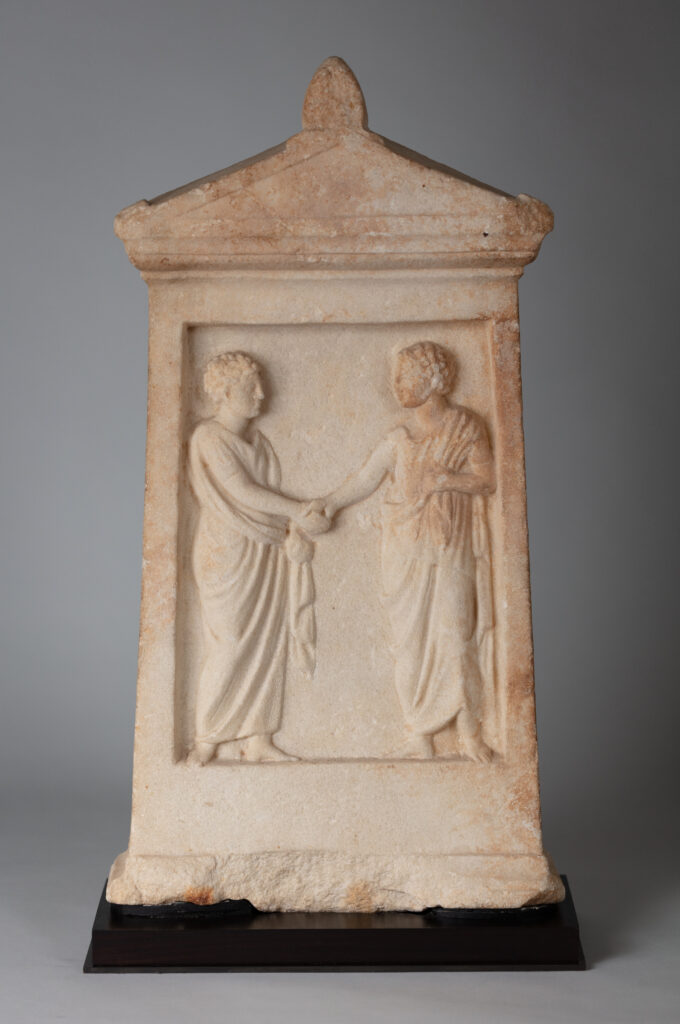
Gift of Edward Perry Warren, Esq., Honorary Degree 1926
1906.2The motif of drunken Heracles was popular across Hellenistic and Roman art and can be found in countless examples across media from all corners of the Hellenistic world. In later Greek and Roman sculpture, the image was popular as part of a larger movement away from idealized treatment of the body and to more nuanced depictions of the human condition and its frailties, including infirmities of old age, wounds and weariness after battle or labor, and, in this case, disarray due to inebriation.
In this example, Heracles reclines in a stupor on a rock draped with his lion skin. A group of four erotes (cupids) mischievously play with the drunken hero, a pair working together to steal his heavy club while another steals away with his oinochoe, or wine vessel. The fourth leans into Heracles’s wine cup, presumably imbibing its remnants. There is an air of levity about the whole scene, which is common in the trope. The scene is sculpted in high relief and is an exceptional example of Hellenistic sculptural achievement.
The original function of the relief is not known, but a similar and more fragmentary relief from the Hellenistic period exists at the Villa Albani in Rome. While most surviving Hellenistic relief sculpture is known from major public buildings like temples and altars erected across the Mediterranean, monumental marble sarcophagi also begin to appear at this time. The imagery of this piece and its Dionysiac resonance seems more appropriate to the private and probably funerary context than to a public altar. Scenes of the drunken Heracles (Hercules) are known from later sarcophagi of the Roman period, which often include Dionysiac revelry. The Bowdoin relief was installed at one point in the wall of a Florentine villa, though which villa is not recorded. The theme was later treated in mythological painting by Rubens.
Before 1906, collection of Edward Perry Warren; 1906, gifted to the Bowdoin College Museum of Art by Edward Perry Warren.
Collector
A testament to his impact as an influential twentieth-century American antiquities collector, Edward Perry Warren’s (1860–1928, H ’26) name is linked to hundreds of ancient objects housed in institutions across the United States, including more than five hundred works at the Bowdoin College Museum of Art alone.

